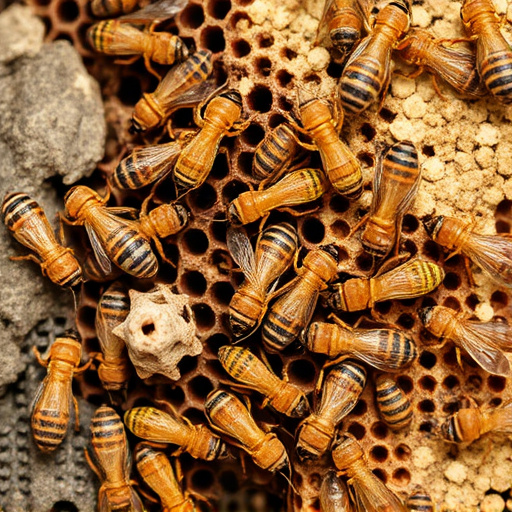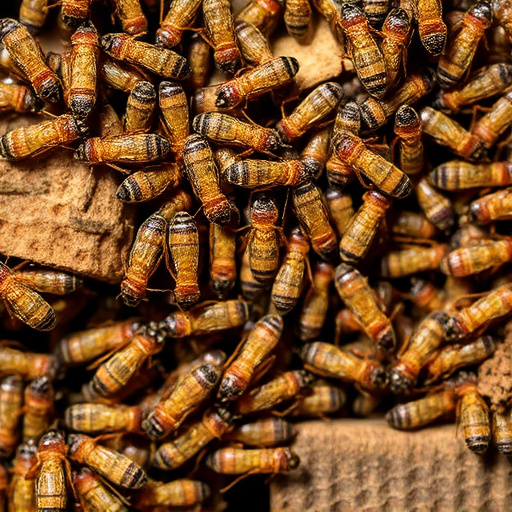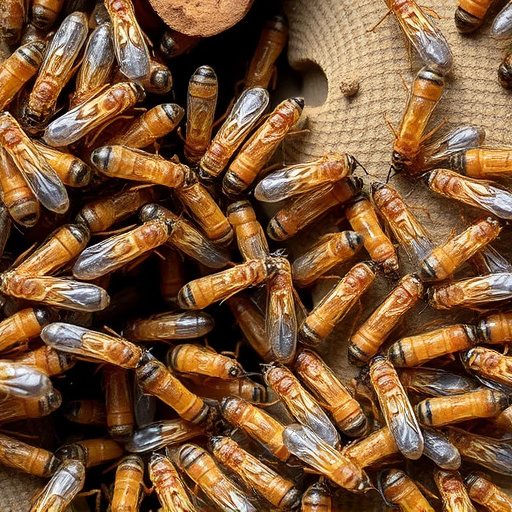Identifying termite species is crucial for effective termite control Tucson services. Professionals distinguish between subterranean and drywood termites through signs like mud tubes or wood damage, enabling targeted treatments. Both types thrive in Tucson, Arizona, posing unique challenges that require tailored termite control Tucson methods to safeguard properties from structural damage caused by these destructive pests. A multi-pronged approach combining regular inspections, preventive measures, and professional interventions is essential for successful termite control Tucson.
“Exploring the various types of termites thriving in the Tucson area is a crucial step towards effective termite control. This desert region plays host to several species, each with unique characteristics and behaviors. From the ubiquitous Subterranean termites to Drywood varieties, understanding these common pests is key to mitigating potential damage.
This article guides residents through the process of identifying local termite species, their habits, and the associated risks. We also offer insights into proven control methods tailored to the Tucson environment, ensuring a comprehensive guide to termite management.”
- Identifying Termite Species in Tucson
- Common Types of Termites in the Area
- Understanding Their Behavior and Damage Potential
- Effective Termite Control Options for Tucson Residents
Identifying Termite Species in Tucson

Identifying termite species in Tucson is a crucial step for homeowners and property managers looking into termite control Tucson services. The region’s diverse ecosystem supports several types of termites, each with distinct behaviors and habitats. Common species include the subterranean termite, known for its extensive tunnel systems beneath structures, and the drywood termite, which prefers to infest wood above ground level.
Professionals in termite control Tucson often rely on careful inspection and expert knowledge to pinpoint these species. Signs like mud tubes (a telltale mark of subterranean termites) or visible wood damage can help identify the problem. Once a species is determined, targeted treatments become more effective, ensuring that the right tools are used to address the specific threat, enhancing the long-term success of termite control Tucson efforts.
Common Types of Termites in the Area

In the vibrant landscape of Tucson, Arizona, several types of termites call this bustling metropolis home. Among the most common are the subterranean termites and drywood termites. The subterranean variety, often considered the most pervasive in termite control Tucson efforts, build intricate labyrinthine tunnels just beneath the surface, making their colonies nearly invisible until damage has occurred. They feed on cellulose-rich materials, which includes wood and paper products, posing a significant threat to homes and structures.
Drywood termites, as their name suggests, prefer drier environments and typically nest in wooden structures above ground level. Unlike their subterranean counterparts, they don’t require contact with soil for survival, allowing them to thrive in various parts of a home, including furniture and wooden fixtures. Termite control Tucson strategies often involve specific treatments tailored to these distinct species to effectively mitigate their presence and protect local properties.
Understanding Their Behavior and Damage Potential

In the Tucson area, understanding the behavior and damage potential of termites is crucial for effective termite control. Termites are social insects that live in colonies, with each colony consisting of workers, soldiers, and a king and queen. The workers are responsible for foraging food, building nests, and maintaining the colony. They are particularly attracted to wooden structures, which they can easily digest and incorporate into their nests. This makes homes in Tucson susceptible to termite damage if proper precautions aren’t taken.
The damage potential of termites is significant. Uncontrolled populations can weaken structural elements, leading to costly repairs or even building failures. Termite control in Tucson involves both prevention and treatment. Regular inspections by professional exterminators are essential to identify infestations early. Once detected, specialized treatments such as baiting systems, chemical barriers, or targeted applications of termiticides can be employed to eliminate termites and protect homes for years to come.
Effective Termite Control Options for Tucson Residents

In the Tucson area, effective termite control is essential for residents aiming to protect their properties from these persistent pests. One key strategy involves regular inspections by professional pest control services. By identifying termite infestations early, professionals can implement targeted treatments, such as baits and localized applications of termiticides, to minimize damage.
Additionally, preventing moisture issues around the home is vital for effective termite control in Tucson. Termites are attracted to water, so addressing leaks, improving drainage, and ensuring proper ventilation can significantly deter their presence. Residents should also consider physical barriers like metal mesh screens around foundations and regular trimming of trees and shrubs to reduce potential habitats for termites. These proactive measures, coupled with professional interventions, provide a robust defense against termite damage in the region.
The diverse termite species found in the Tucson area necessitate proactive termite control Tucson measures. Understanding the unique behaviors and damage potential of common types, such as Western Subterraneous and Drywood termites, is essential for residents. Implementing effective strategies, from preventive treatments to targeted inspections, can safeguard homes and properties from these persistent pests. By choosing the right termite control Tucson solutions, homeowners can protect their investments and enjoy peace of mind in a secure living environment.
